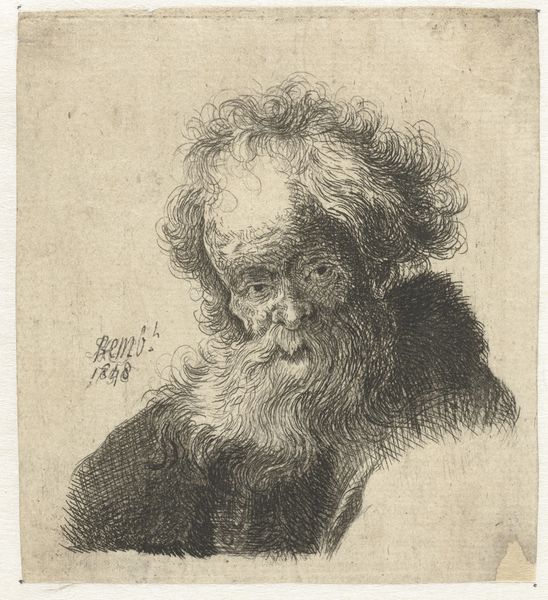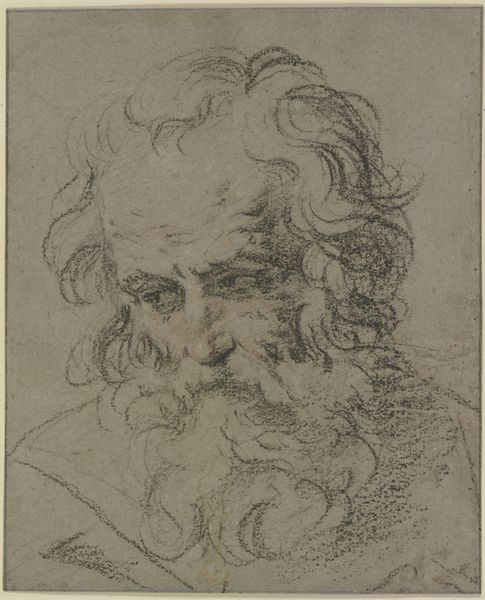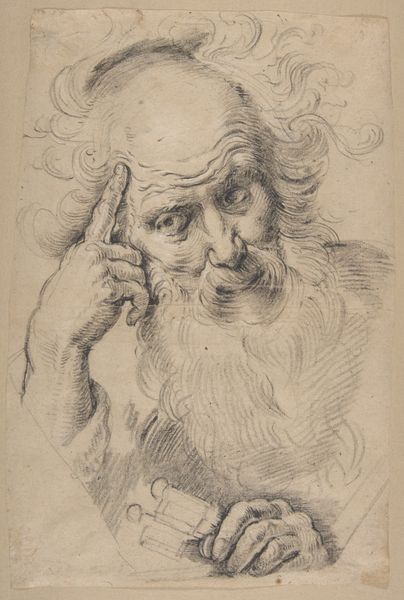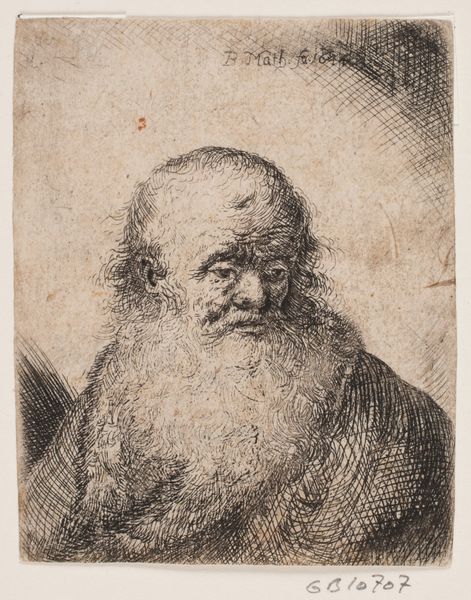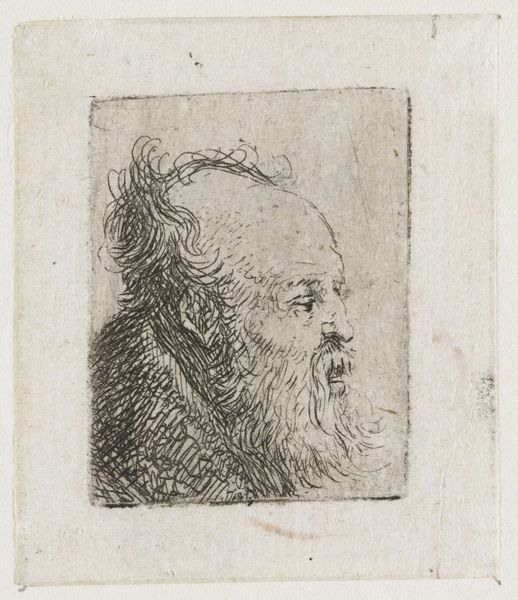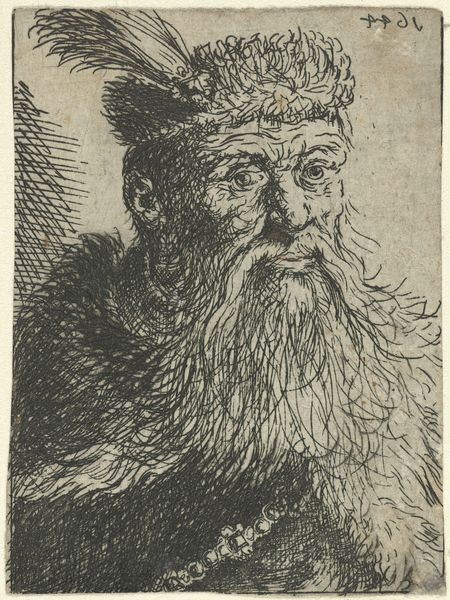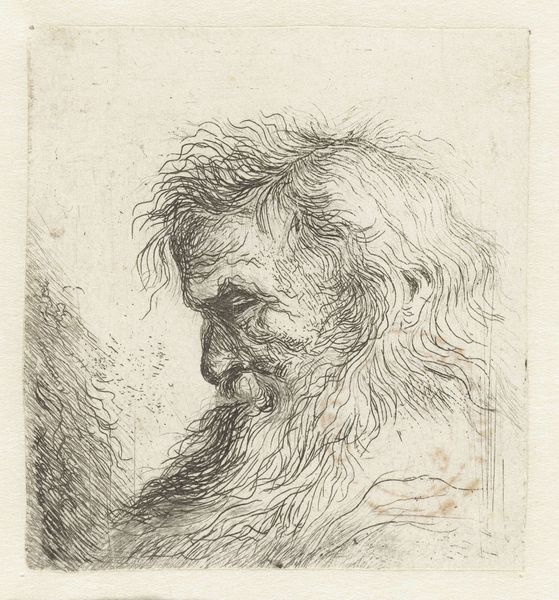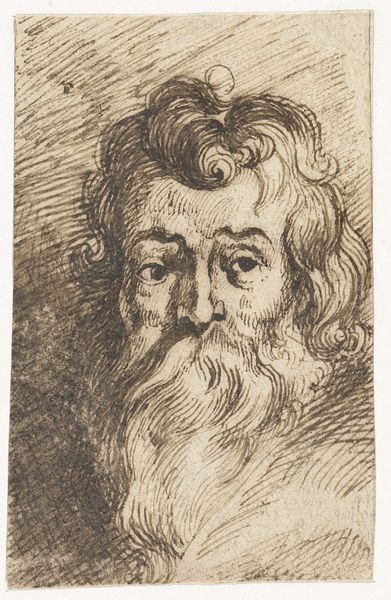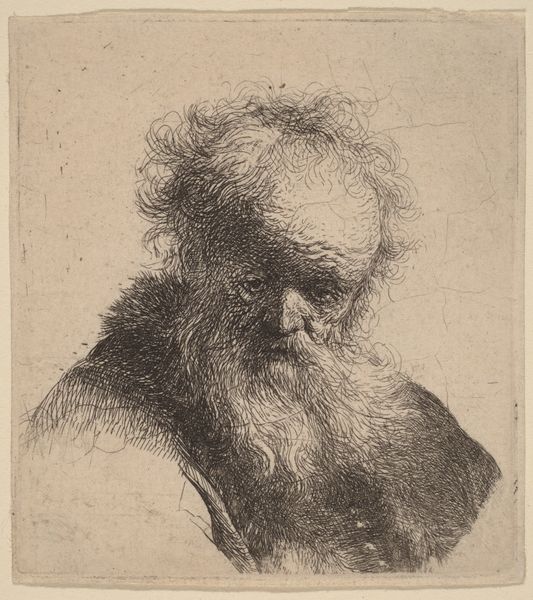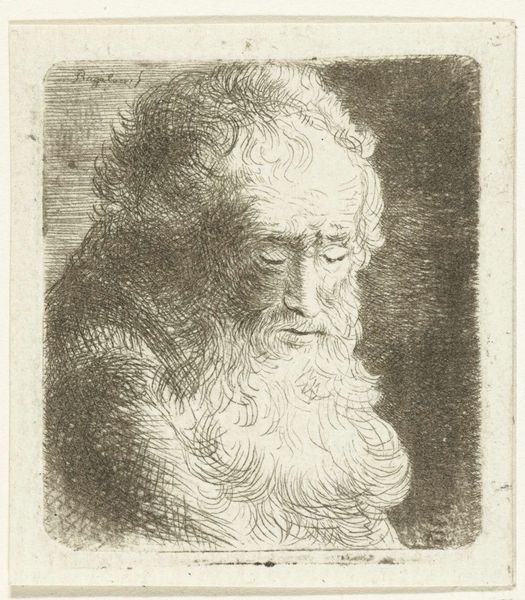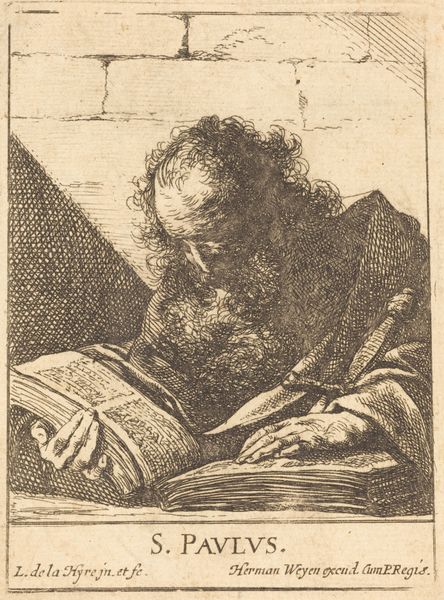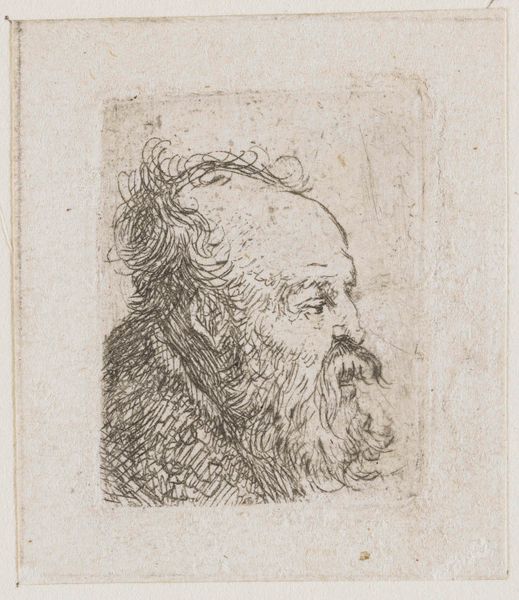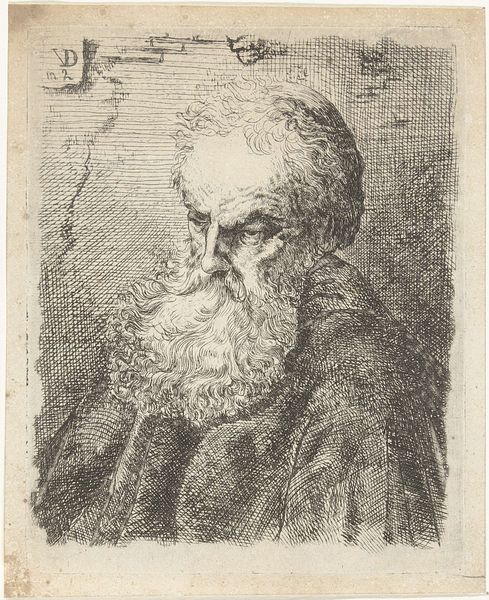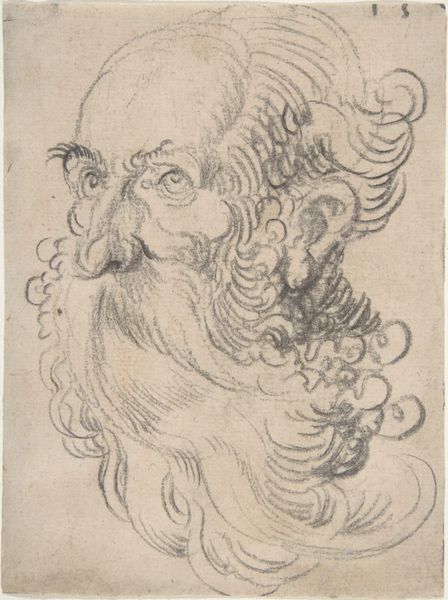
Bust of an old man with a flowing beard: the head bowed forward: left shoulder unshaded 1760 - 1781
0:00
0:00
Dimensions: height 78 mm, width 61 mm
Copyright: Rijks Museum: Open Domain
Editor: Here we have James Bretherton's engraving, "Bust of an old man with a flowing beard," created between 1760 and 1781. The intaglio print presents a somber figure. What can you tell us about it? Curator: Well, consider the production. Intaglio, etching—these were commercial processes. How does the reproductive nature of printmaking democratize portraiture? Is Bretherton responding to, or perhaps undermining, aristocratic painting traditions by producing a widely available image of this, clearly working-class, subject? Editor: That's fascinating. So, instead of focusing on the artistic genius, you're drawn to the means of production and distribution. Curator: Precisely. Think about the labor involved: the engraver, the printer, the distributors. This wasn't simply Bretherton alone in his studio. Moreover, the work's existence challenges traditional hierarchies by turning the portrait, traditionally a high-art form reserved for the wealthy, into a consumer good available to the masses. Who consumed this? Where did it hang? What impact did that accessibility have? Editor: It's interesting to consider the broader context instead of just focusing on the aesthetic qualities. Did the Baroque style have some role in all of this? Curator: Absolutely! Baroque art often carries heavy sociopolitical symbolism. Was the intention purely commercial, or could this image – with its attention to texture and raw humanity achieved through meticulous, replicable engraving – also carry social commentary, placing value on an individual often overlooked by mainstream artistic traditions? Editor: I hadn't thought of it that way. It really highlights how the materials and the way it was made shaped its message. Curator: Indeed. Examining materiality gives a far better understanding than considering some aesthetic ‘ideal’. It all impacts meaning. Editor: That is very helpful; I'll be sure to think about context and means next time I study an artwork. Curator: Excellent. Now, think about who *owns* this particular print today…that changes things again, doesn’t it?
Comments
No comments
Be the first to comment and join the conversation on the ultimate creative platform.
